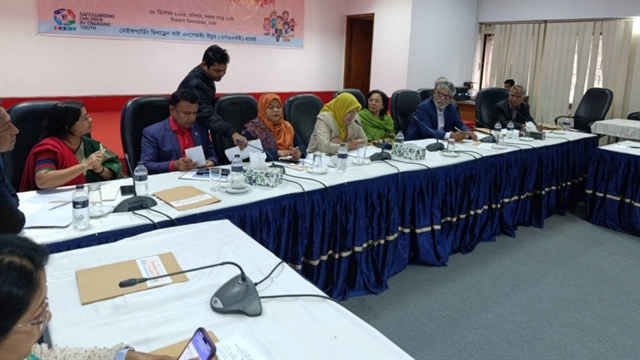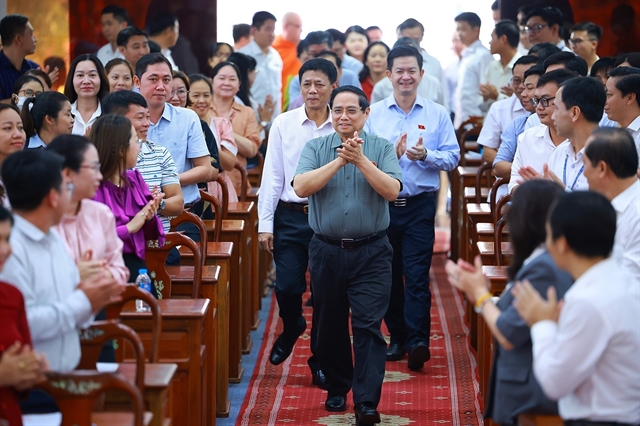 Society
Society

Salaries for public officials and civil servants need a major revamp to attract talent and avoid a brain-drain, experts agreed at a conference in Hà Nội on Monday.
 |
| Salaries for public officials and civil servants need a major revamp to attract talent and avoid a brain-drain, experts agreed at a conference in Hà Nội on Monday. — Photo doanhnghiep.vn |
HÀ NỘI – Salaries for public officials and civil servants need a major revamp to attract talent and avoid a brain-drain, experts agreed at a conference in Hà Nội on Monday.
The conference, organised by the Ministry of Home Affairs, discussed ways to set up a payroll system and salary mechanism that confirms with workers’ positions and work performances.
The salary structure for public servants has undergone four reforms thus far, with the latest one being in 2004. Conference participants said there were many shortcomings that made the system unfit for the current situation.
In Việt Nam, the salaries for public servants are calculated by multiplying a fixed base salary regulated by the Government with a co-efficient that varies from person to person, depending on seniority and position. The country also applies an egalitarian pay structure wherein the difference between the lowest and highest paid is small.
Low salaries are a major reason for poor performance at work, said Đặng Như Lợi, former chairman of National Assembly’s Committee for Social Affairs.
Although the government has made efforts to increase salaries, the remuneration public servants receive remains low. A new entry public servant with a graduate degree currently earns a monthly salary of about VNĐ2.8 million (about US$124), while the State President, at the top of the salary scale, earns about VNĐ15.7 million ($698).
Lợi said the average salaries of public servants were lower than those of employees in manufacturing and business sectors and were not on par with their labour values.
“As a result, salary is no longer a motivation for public servants and hardly has any effect on improving the quality of work,” he said.
“Every year, tens of trillions of đồng of the State Budget are spent on salary reforms but it has contributed little to the effectiveness of administrative reforms. It is a huge waste.”
Dr Trần Quốc Toản, former vice chairman of the Government’s Office, said the salary structure in Việt Nam was tailored to the previous State-subsidised period and remained outdated in the current market economy despite various reforms.
He said a salary structure which emphasizes equality of income among all employees discouraged public servants from being dedicated to their work.
“Salary levels should be based on abilities, seniority and work performance. The mechanism of increasing the salary co-efficient every three years, as it is now, should no longer be applied.
“If young, highly-qualified employees are not paid appropriately and in conformity with their work, or if they want to rise further in their careers but face unfair hurdles, they will have no motivation and will easily quit. As a result, our public administration system will not have good quality staff,” Toản said.
Associate Prof Vũ Hoàng Ngân, deputy head of the Economics and Human Resource Management under the National Economics University, suggested that salary structures that have proven effective in other economic sectors be used in the public sector.
He proposed application of the 3P model, under which salaries are based on three criteria: Position, Person and Performance.
“The 3P model would generate motivation for employees to work more effectively,” he said.
Trần Quang Dũng, head of the Salary Department under the Ministry of Home Affairs, said all the opinions raised at the conference would be considered for incorporation in the draft proposal of salary reforms set to be submitted to the National Assembly in May, 2018.
The proposal will take into consideration several criteria including capability, work performance and creativity in calculating salaries for public sector employees, and will not mainly depend on degree and seniority, as it is today, Dũng said. – VNS




